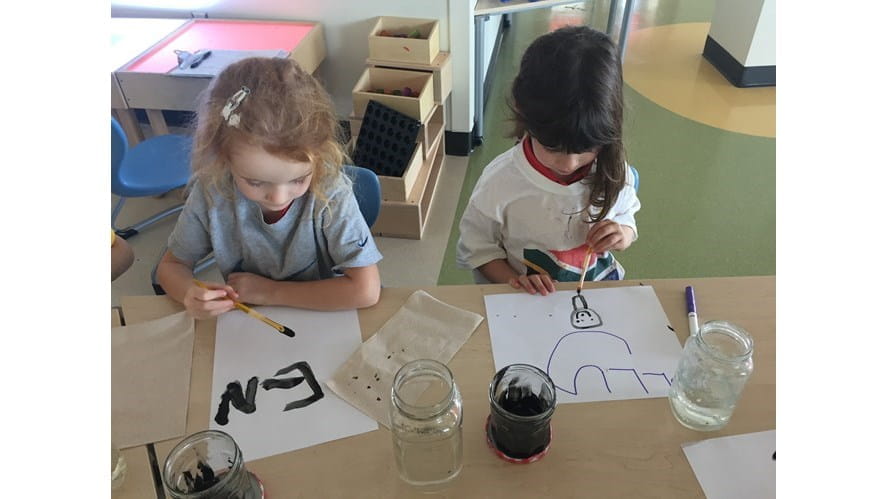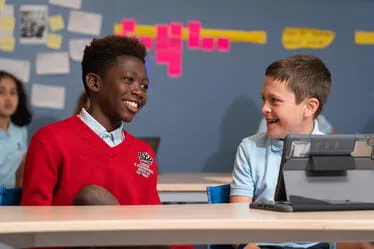The children had ideas about creating a space for painting in our Atelier. This week I have been working with the children to introduce such a space.

The children had ideas about creating a space for painting in our Atelier. This week I have been working with the children to introduce such a space.

The children had ideas about creating a space for painting in our Atelier. This week I have been working with the children to introduce such a space.
Before launching into the full spectrum of colour, we began with black tempera. Initially we focussed on setting up our work area, discussing the importance of taking care of materials and tools and the space we are working in. Each child was presented with a new paint brush resting on a paper towel, a jar of black paint, a water jar and a sheet of paper. Before diving into the paint I introduced the children to the dry paintbrushes, “Take a look at your paintbrush, what do you notice about it? Feel its soft hair on your hand or your cheek. Do you notice that the hair on the brush stands up straight? That’s the best way for the paint brush hair to be - standing up straight. If you push your brush down hard, the hair gets squished flat and it can’t spread paint very well. We touch the brush to the paper with a light touch so that the hair stands up when we paint.”
After inspecting the brush, the children were invited to use the paint. Black paint on white paper makes a strong declaration. The children were confident to explore the paint presented to them.
I explained, “Black is a strong colour. Look at that line of black on the white paper. What story is that back line telling? Where does the line begin? Where is it going? What happens to it along the way?”
As the children used the brush, several of them talked of how they were tickling the paper with it just as it had tickled their hands and others talked about how gently they were using it.
Many children told stories of the characters or scenes they were making as they painted. Many children described their work and gave it a title. It has been fascinating for me to watch them and I wonder, what meaning does their work hold for them? What images does the black paint inspire? They seemed to notice the striking boldness of black on white. Some moved their brushes with careful deliberation, hands moving with precision, grace and concentration. Black and white are potent colours. They call attention to line, to the edges of shapes. Their starkness helps us to see deeply.
The story of black and white is easily overlooked, dismissed as unimportant, not as immediately engaging as colour. But children’s encounters with these shades are richly nuanced and full of textural depth. Next week I will present the children with black paper and white paint as well as white paper and black paint and we will experiment with mixing these two colors together, observing the contrasts and mixing shades of grey.